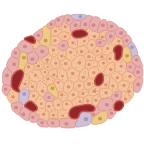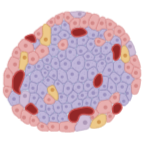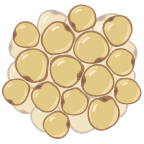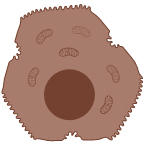Rodent Hepatocyte Applications
Recommended Products
Modified Seglen’s Two-Step Isolation Method1,2
Note: Tissue digestion is stopped when cells under Gilson’s capsule (membrane that encapsulates the liver) move freely in the tissue. The timing is determined by the expertise of the individual performing the isolation.
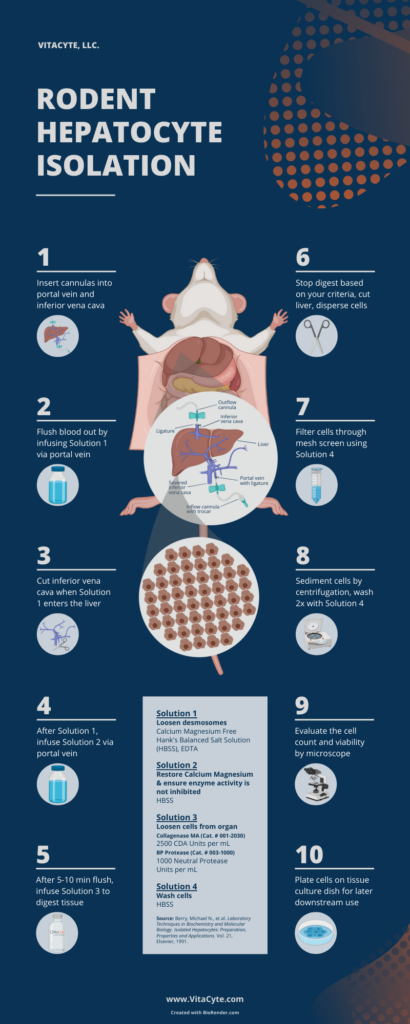
Expected Cell Yield
For many laboratories, recovery a sufficient number of hepatocytes is not an issue since the liver is the largest internal organ in mammals and makes up 4-6% of the body weight of the rodents4. A 150-300 g hooded Wistar rat has 109 cells with about 60-70% being hepatocytes. Typical rat liver cell yields are between 30-60 million cells per g of tissue but these yields can be affected by the nutritional state of the animal5.
Perspectives
Seglen’s two step procedure was a modification of a procedure initially developed by Berry & Friend6 in 1969. This “one step” procedure perfused the liver in situ with crude collagenase dissolved in a calcium free Hanks balanced salt solution (HBSS). The initial exposure of liver tissue to a low calcium solution was essential to the success of the procedure since it disrupted desmosomes, structures that hold liver cells together. Once this structure is compromised, C. histolyticum collagenase and proteases can degrade these and other proteins, leading to the release of cells from tissue. It is essential that the collagenase solution is supplemented with calcium to maintain its enzyme activity.1,7
Crude collagenase was and still is used as the primary reagent for most rodent hepatocyte isolations. Both Seglen and Berry have commented that variability in yield and quality of hepatocytes is due to the lot to lot variability of this reagent1,5. We have shown the variability in biochemical composition and performance of different lots of Sigma Type XI collagenase in isolating human hepatocytes.8
Resources & Reviews
The Seglen procedure is commonly used today to isolate hepatocytes from many different species. Additional modifications were made to meet the needs of different users. A superb methods book by Berry and colleagues summarizes the isolation and application of hepatocytes as of 19915. This book has been cited over 3500 times and by searching within these cites, you are likely to find the information you desire. The European Center for Validation of Alternative Methods (ECVAM) held a workshop to summarize a list of recommendations for rat hepatocyte isolation9. JoVE and other support material have also been published to describe rat10 and mouse11 hepatocyte isolation procedures.
References
- Seglen P.O. (1976) Preparation of isolated rat liver cells. Methods in Cell Biology 13, 29-83.
Seglen PO. Isolation of hepatocytes. In: Celis JE, ed. Cell biology : a laboratory handbook. San Diego :: Academic Press; 1994: 96-102.
Kreamer BL, Staecker JL, Sawada N, Sattler GL, Hsia MT, Pitot HC. Use of a low-speed, iso-density percoll centrifugation method to increase the viability of isolated rat hepatocyte preparations. In vitro cellular & developmental biology : journal of the Tissue Culture Association 1986; 22(4): 201-11.
Arms AD, C.C.Travis. Reference physiological parameters in pharmacokinetic modeling. Washington DC: Environmental Protection Agency; 1988.
Berry MN, Edwards AM, Barritt GJ. Isolated hepatocytes: prepartion, properties and applications. New York: Elsevier; 1991.
Berry MN, Friend DS. High-yield preparation of isolated rat liver parenchymal cells: a biochemical and fine structural study. Journal of Cell Biology 1969; 43(3): 506-20.
Berry MN, Grivell AR, Grivell MB, Phillips JW. Isolated hepatocytes–past, present and future. Cell Biol Toxicol 1997; 13(4-5): 223-33.
Blaauboer B, Boobis A, Castell J, et al. Practical applicability of hepatocyte cultures in routine testing: the report and recommendations of ECVAM Workshop 1. Alternatives to laboratory animals: ATLA 1994; 22: 231-41.
Shen L, Hillebrand A, Wang DQ, Liu M. Isolation and primary culture of rat hepatic cells. Journal of visualized experiments : JoVE 2012; (64).

